May 7, 2025 | 10:11 GMT +7
May 7, 2025 | 10:11 GMT +7
Hotline: 0913.378.918
May 7, 2025 | 10:11 GMT +7
Hotline: 0913.378.918
For a long time, agriculture has been seen as an industry that is close to nature and environmentally friendly. However, few people realize that this sector is one of the largest sources of greenhouse gas emissions globally today.
According to the 2022 report by the Food and Agriculture Organization (FAO) and the Intergovernmental Panel on Climate Change (IPCC), the global food and agriculture system emits approximately 16.2 billion tons of CO2 equivalent each year, accounting for nearly 30% of total global greenhouse gas emissions.
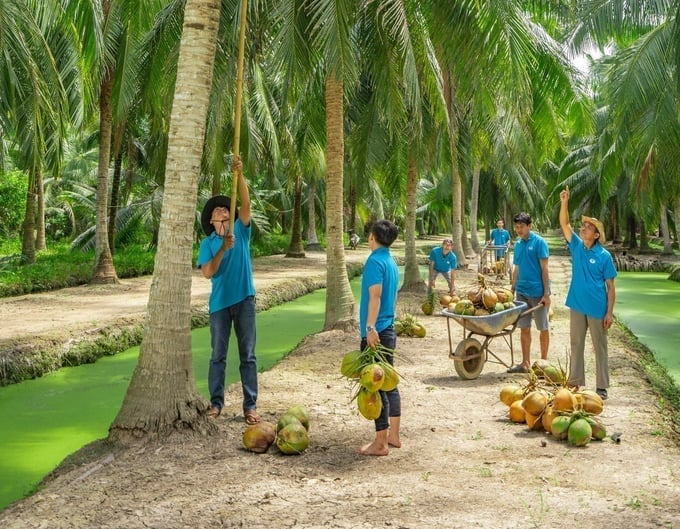
According to experts, with its large coconut plantation area, the two provinces of Ben Tre and Tra Vinh could earn millions of dollars by selling carbon credits. Photo: Minh Dam.
Of this, agricultural production, including crop cultivation and livestock farming, accounts for 14%, supply chains such as transportation and processing account for 10%, and land use changes, such as deforestation, account for 6%. In particular, livestock farming and rice cultivation are two major culprits due to methane (CH4) emissions – a gas with 25 times the warming effect of CO2. Additionally, chemical fertilizers also generate N2O, a gas with a warming potential nearly 300 times higher than CO2.
However, agriculture is not the problem; it could be the solution. By changing our mindset and methods, agriculture has the potential to become a natural "carbon sink", which means it can absorb and store greenhouse gases in the soil, in crops, and organic agricultural by-products.
Carbon farming is a form of agriculture that helps absorb more greenhouse gases than are emitted through smart land, crop, and livestock management practices. When done correctly, farmers help protect the environment and generate carbon credits to trade with organizations or companies that need to purchase them to offset their emissions.
Moreover, carbon farming practices also help improve soil fertility and health, retain water more effectively during dry seasons, reduce fertilizer and pesticide costs, increase productivity and stabilize yields, contribute to biodiversity and sustainable agricultural development, and improve food quality and ensure food safety.
Currently, some technology companies around the world can monitor and model carbon levels in the soil via satellite systems. This helps reduce sampling costs and provides accurate carbon distribution maps. This is a very useful tool for cooperatives or large-scale agricultural businesses that want to participate in the international carbon credit market.
Farmers can practice carbon farming using several easy-to-apply methods in production. For example, keeping the soil covered: Do not leave the soil bare between two cropping seasons; plant legumes to fix nitrogen, prevent erosion, and retain carbon.
Farmers can reduce tilling and leave crop residues by minimizing deep tillage, which helps protect soil structure and prevent carbon loss. Straw and crop residues from the previous season should be left on the field to increase the soil's organic content.
Multiple complementary crops can be grown together for intercropping and staggered planting to help reduce pest attacks and improve biodiversity.
In agroforestry systems, farmers can interplant perennial crops with staple crops, which helps retain soil, absorb CO2, and create additional income. At the same time, chemical fertilizers should be reduced, and organic fertilizers should be enhanced to help reduce N2O emissions.
In addition, applying smart technologies, such as farm management software, drones, moisture sensors, soil maps, etc., can help monitor and optimize water, fertilizer, fuel, and reduce pesticide use.
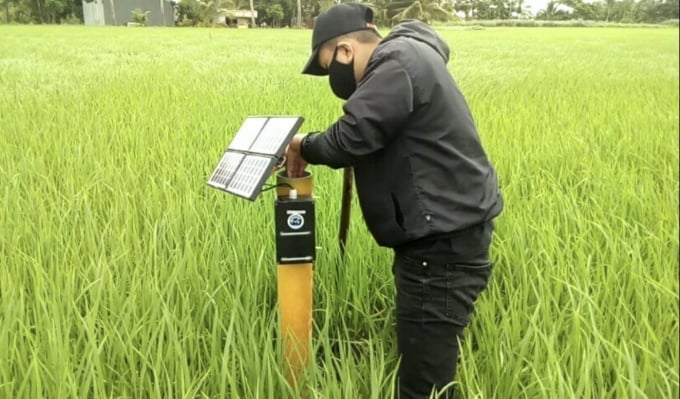
The water level measurement device using IoT technology, developed by Tra Vinh University, for applying alternating flooded-dry irrigation techniques can save up to 28% of water and reduce greenhouse gas emissions. Photo: Minh Dam.
The transition to carbon farming requires some initial investment, such as equipment, new knowledge, and changes in farming habits. Additionally, some techniques, like cover cropping or agroforestry, may reduce yields in the first season. However, in the long run, soil health improves, input costs decrease, and income from carbon credits will provide farmers with a more sustainable livelihood.
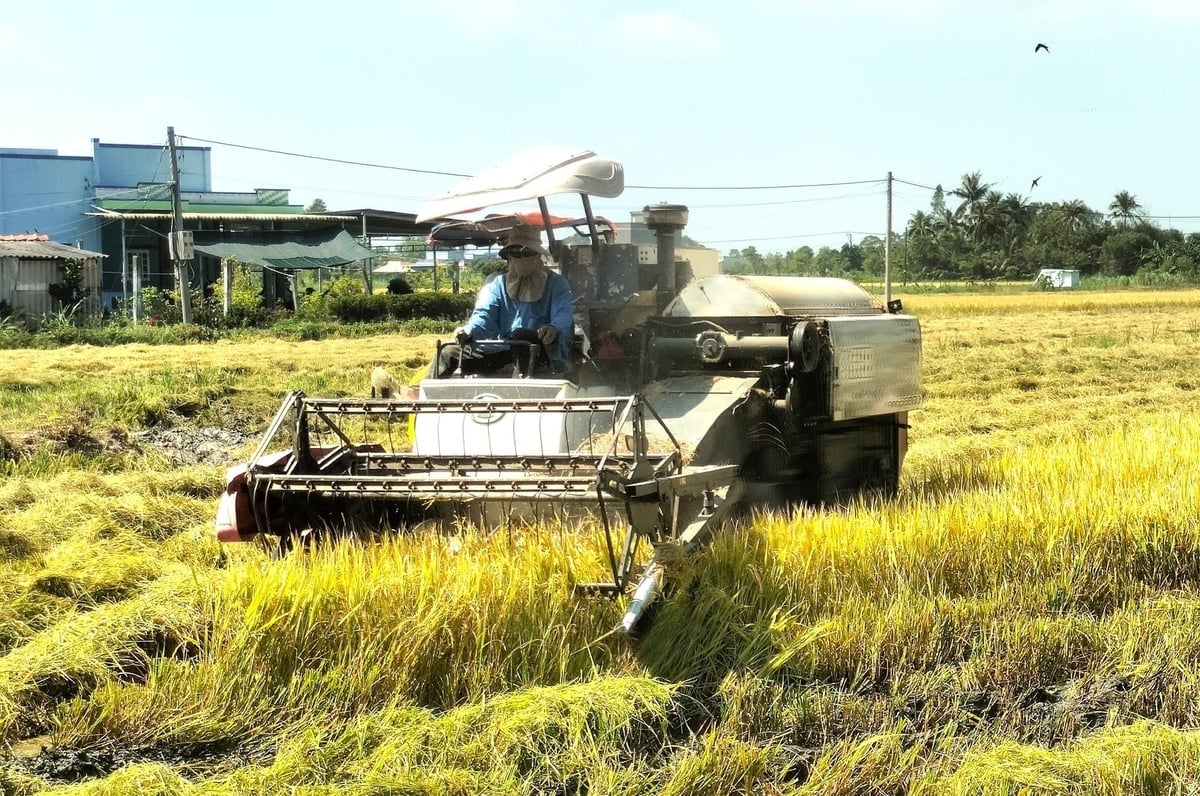
Straw and leftover materials from the previous crop should be left on the field to increase the organic content of the soil. Photo: Minh Dam.
In Vietnam, experimental carbon farming models, such as low-emission rice cultivation using the alternating wetting and drying (AWD) irrigation method in the Mekong Delta, or agroforestry practices in the Central Highlands, are proving that farmers can both farm effectively and generate carbon credits to sell on the international market. With additional support from the government and businesses, carbon farming will no longer be a distant concept but will become a sustainable livelihood in the near future.
In the context of increasingly evident climate change, carbon farming is not only a necessary direction but also a golden opportunity for Vietnamese farmers to make a strong transformation from emission creators to greenhouse gas absorbers, from traditional farming to smart agriculture, with additional income from environmental benefits. With support in terms of technology, finance, and policy, Vietnamese agriculture can fully become a leader in efforts to reduce emissions and develop green initiatives regionally and globally.
Translated by Kieu Chi
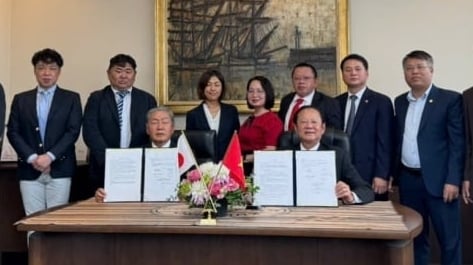
(VAN) This is a key content of the Memorandum of Understanding recently signed between the Vietnam Fisheries Society and Kunihiro Inc of Japan.
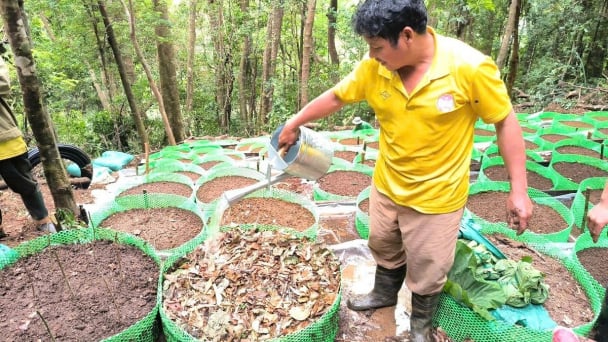
(VAN) To achieve the goal, local authorities and businesses in Kon Tum province have fully prepared the necessary conditions for the new Ngoc Linh ginseng planting season.
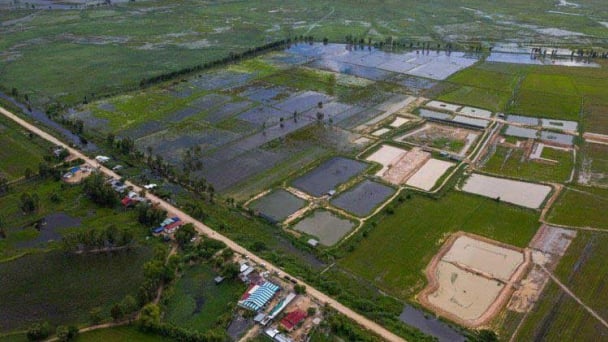
(VAN) Jiangsu province is gearing up to host training programs in Phnom Penh, the capital of Cambodia, this year to establish the Fish and Rice Corridor.

(VAN) Le Hoang Minh, representing Vinamilk, shared the company's experience in energy saving and green energy transition for production at a workshop held during the P4G Summit.
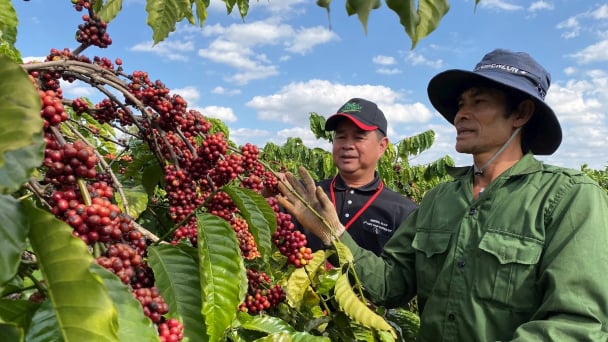
(VAN) Businesses emphasize fairness and equality when integrating social factors into their sustainable development strategies.
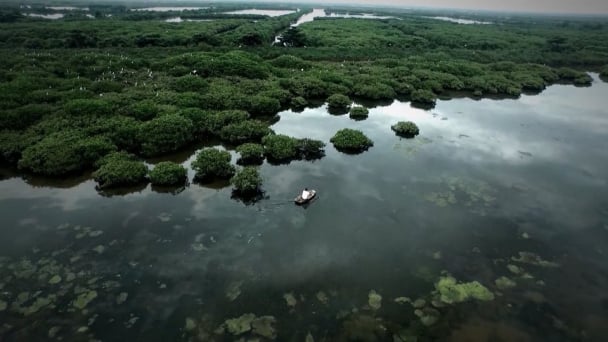
(VAN) French organizations and enterprises propose that Thai Binh province provide potential and long-term cooperation contents related to climate change response and green industrial development.